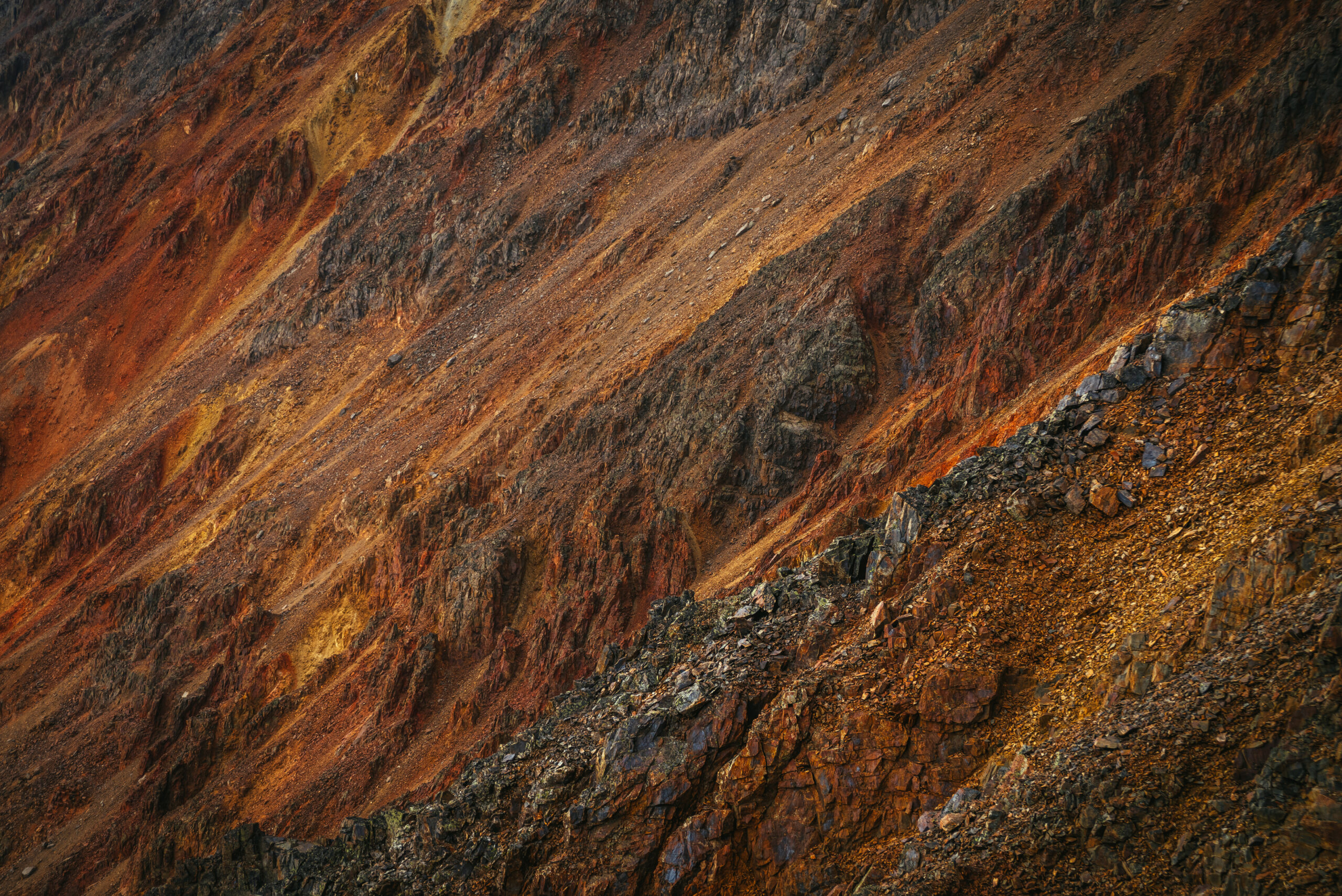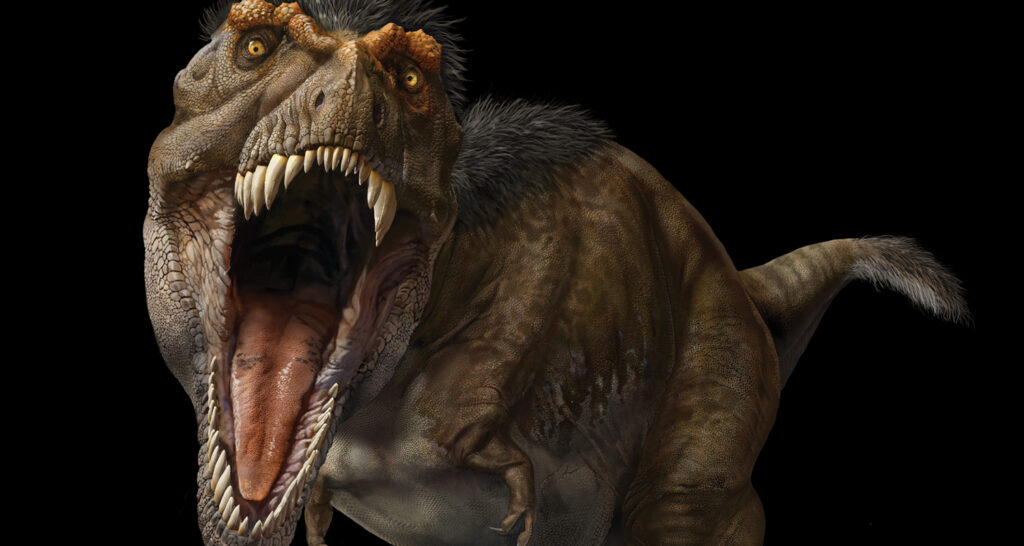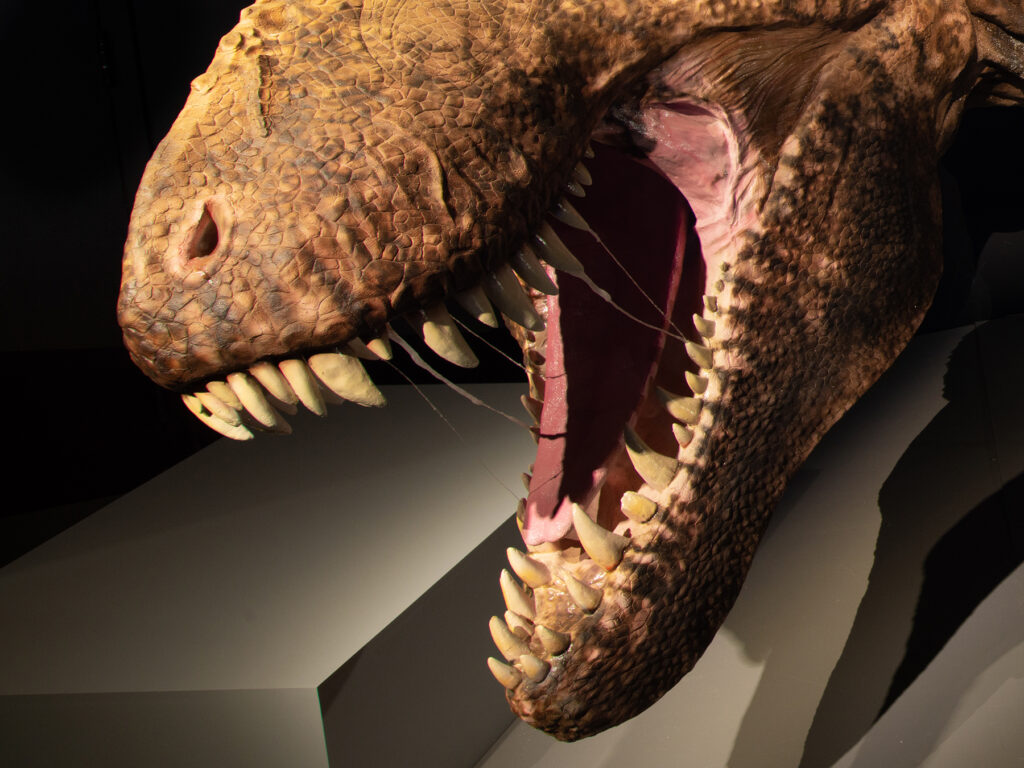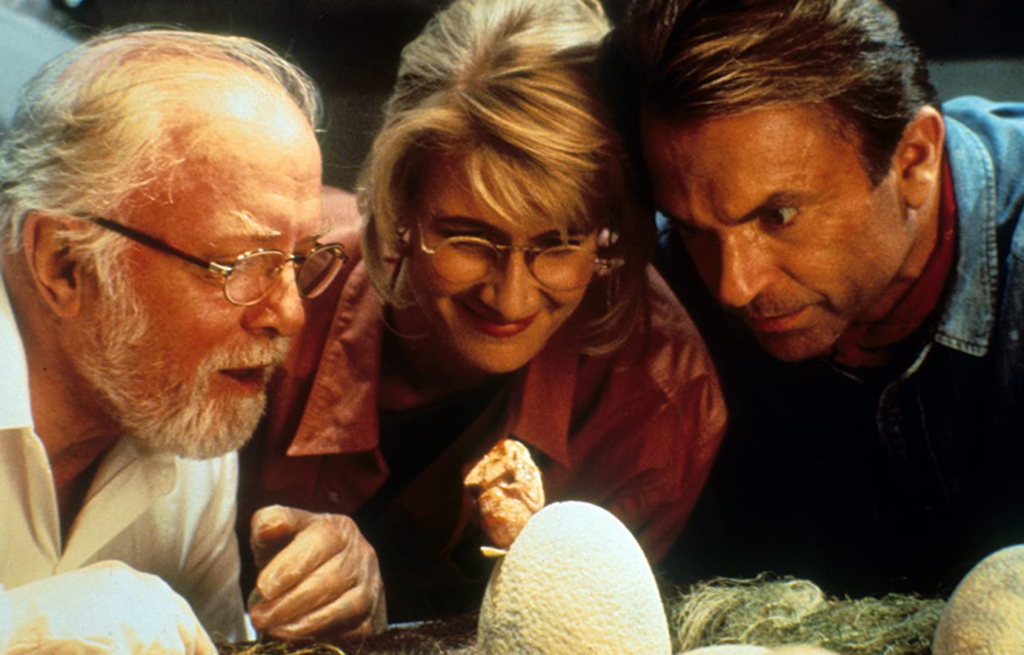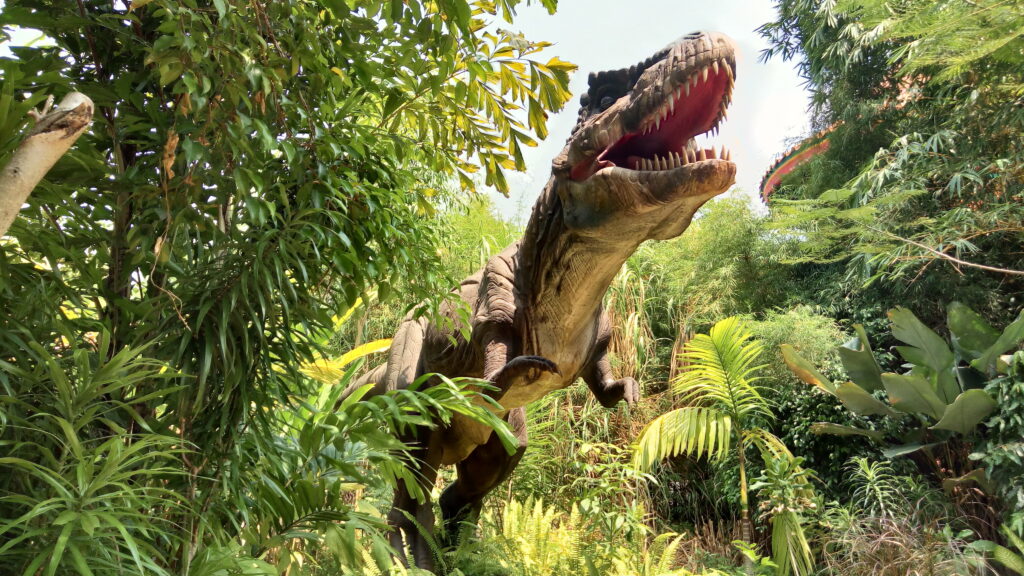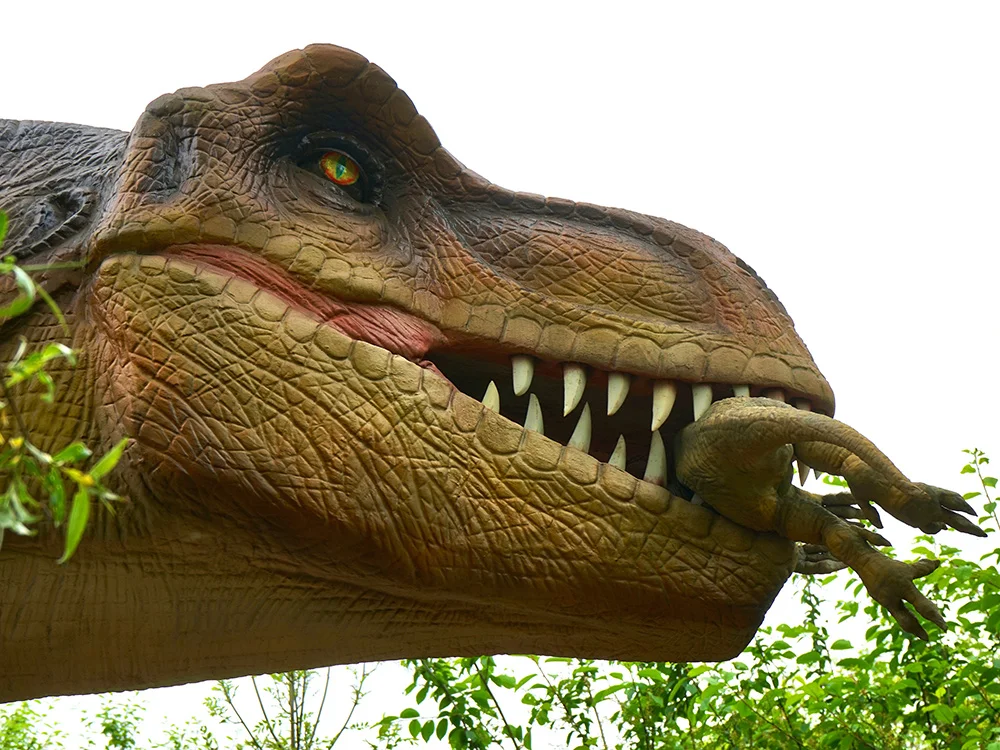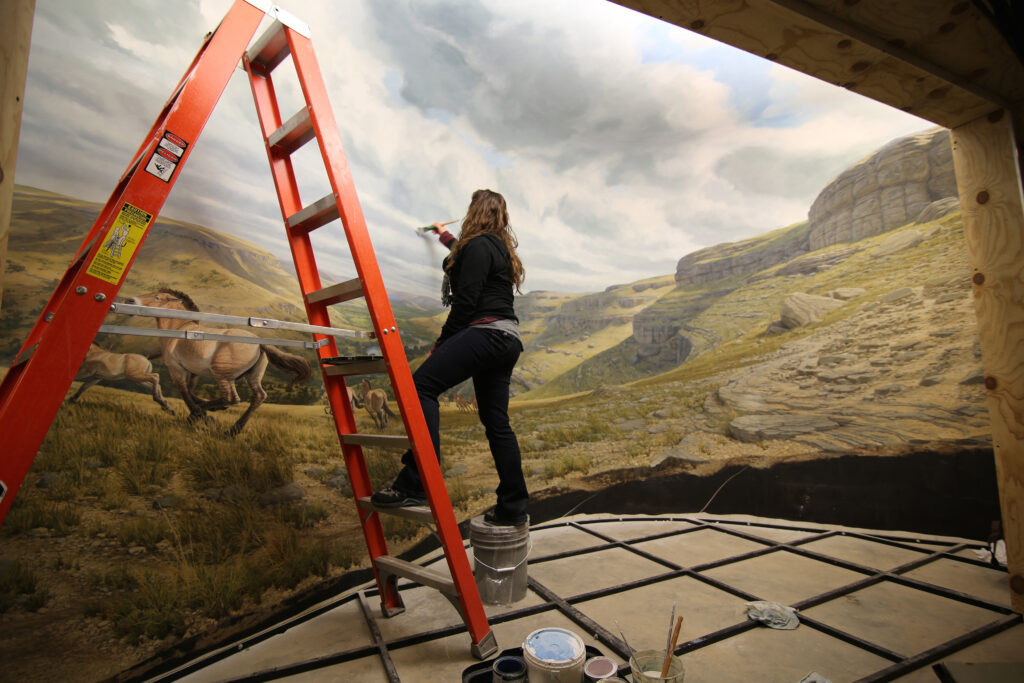“My parents have a photo of me when I was about two sitting in my yard with a dinosaur toy next to me,” says Dr. Holly Woodward Ballard, paleohistologist and associate professor of anatomy and paleontology at Oklahoma State University. “I had a spoon in my hand and a pail next to me. They told me I was digging for dinosaurs in the backyard.”
It took a few years but in 2007, Dr. Woodward finally went digging. Up on Egg Mountain in Montana, with the Rocky Mountains in the distance, Dr. Woodward saw—for the first time—an abundance of eggs and eggshells that belonged to Maiasaura, a hadrosaur (duck-billed dinosaur) that roamed present-day Montana and Alberta about 76 million years ago.
“It was so exciting to just see evidence of behaviour, evidence of life.” Dr. Woodward exclaims. “You're just walking and you look down and there are eggshells everywhere! There were nests with eggs in them still weathering out, there was dung everywhere. It reminded me of a cow pasture.”
An Egg-cellent Discovery
When English paleontologist William Buckland named Megalosaurus (meaning “Great Lizard”) in Stonesfield, Oxfordshire in 1824, the term “dinosaur” did not exist yet (that would come in 1842). To Buckland, this enormous carnivore resembled a predatory lizard.
By the end of the century, paleontologists had made more discoveries across the globe, including the discovery of Hadrosaurus, the first duck-billed dinosaur, in New Jersey in 1858. Although the picture of what dinosaurs looked like was growing, the idea of what dinosaurs acted like was still forming.
But in 1978, paleontologist Dr. Jack Horner (who Dr. Woodward would eventually study under) made an unusual discovery in Montana—he found fossil remains of eggshells and adult and baby Maiasaura.
In fact, in the area surrounding the Maiasaura nesting grounds, Dr. Horner and his team went on to find so many fossil remains, including eggs and embryos from other dinosaur species such as Troodon and Orodromeus, that the area is now colloquially known as “Egg Mountain.”
Because of the location of these specimens (baby Maiasaura skeletons and fossilized eggshells were found near nesting grounds), it was clear to Dr. Horner and his team that, after hatching, baby Maiasaura spent a significant amount of time in their nests being cared for and fed by adult Maiasaura.
“Since then, the sediments that Maiasaura is most frequently found in are nesting horizons,” Dr. Woodward adds. “We’ve found evidence of several nests in that area so we know it was likely a nesting ground, with the young staying within the nests and the parents tending to them.”
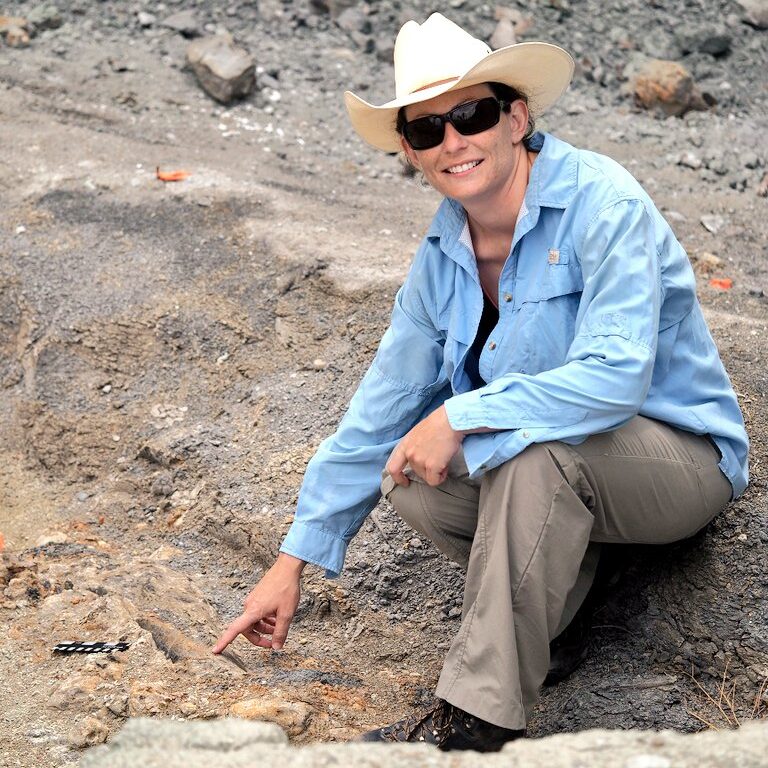
More Than a Predatory Lizard
In the mid 1970s, dinosaurs were not yet dynamic. They were not yet cunning enough to be the stars of a theme park on the fictional island of Isla Nublar, not colourful enough to be the lovable, purple star of a television show, and not charming enough to run a dinosaur train for children.
Dinosaurs were still—as depicted in the 1970 documentary directed by Wah Chang—“The Terrible Lizards.” They were sluggish and surly, bloated and beastly, dim-witted and destructive. Covered in a palette of browns, greys, and greens, dinosaurs were tail-dragging, drab-looking, obsolete animals.
Dr. Horner’s discovery challenged the existing understanding of how dinosaurs actually lived: It was the first evidence that some dinosaurs nurtured and cared for their young, and it helped people see dinosaurs as animals that once demonstrated complex behaviours.
Not only could dinosaurs brutally chomp down on prey, they could also raise and foster their young.
“This was a really revolutionary idea back then,” says Dr. Woodward. “It was another piece of evidence that dinosaurs were more similar to birds than they were to lizards.”
A Good Mother
Maiasaura (meaning “Good Mother Lizard”) wasn’t an elephantine predator like T. rex or Giganotosaurus, but it was a great protector. Maiasaura was a medium-sized hadrosaur with a distinguishing crest between its eyes. As an adult, it was about 20 feet long, but when it was born, it was incredibly tiny with large eyes, a small head, and weak, skinny limbs.
Because of this, hatchlings remained in their nests after their birth, relying on their parents for care and protection.
Dr. Woodward shares that similar to cows and other herd animals like sheep and wildebeest, Maiasaura was a social dinosaur and roamed in packs to protect themselves.
“Given its stride length, it could probably cover a decent amount of ground but it wasn’t gigantic, it wasn’t a fleet-footed runner. Living in giant herds was likely its defense mechanism.”
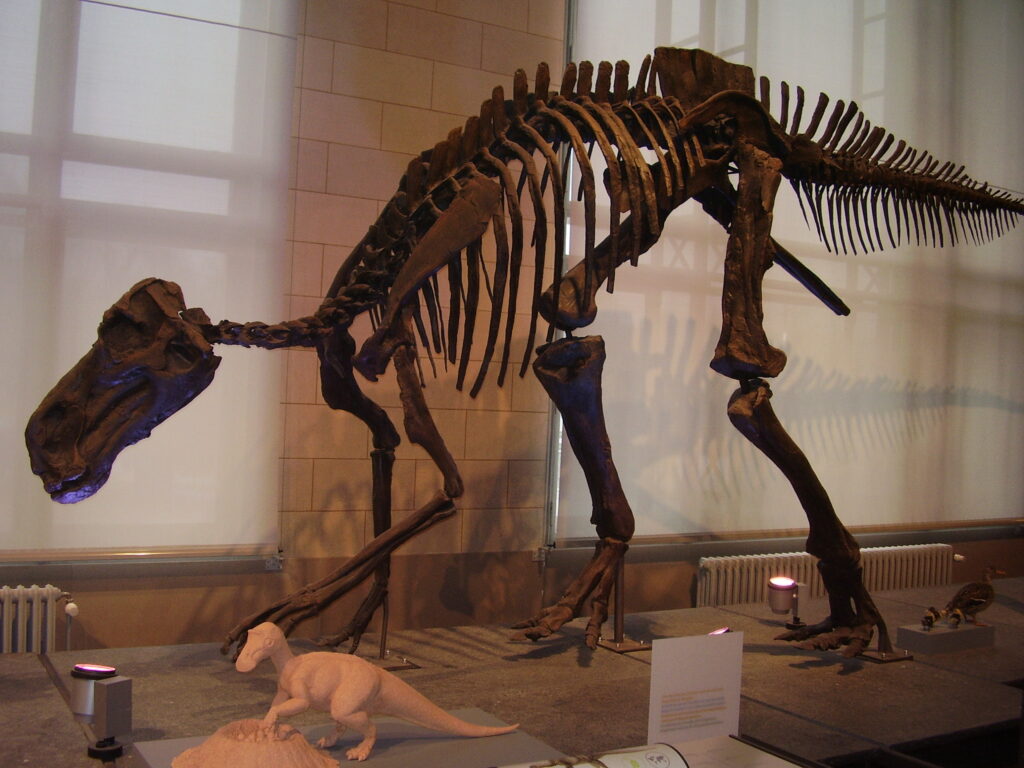
Unlike carnivorous dinosaurs, herbivores like Maiasaura didn’t need to learn how to stalk prey, how to entrap them, or how to fight back if there was resistance from prey. Their food (plants, trees, and sometimes insects!) was readily available.
So, herbivorous dinosaurs, as Dr. Woodward explains, were “reactionary.” Maiasaura needed to rely on good hearing, good eyesight, and the reactions of their cohorts to danger.
Dr. Woodward, whose research work includes studying growth rings in bones, shares that Maiasaura grew quickly. She compares their growth to how quickly bison or ostriches grow today. By age 8, most Maiasaura had already reached their adult size of 20 feet in length.
“The idea there is probably to grow as fast as you can to escape the predation threshold. So, if you can get big quickly, fewer things are going to try to eat you.”
She adds that predation played a considerable role in the mortality rate of Maiasaura (about 90% in its first year), but illness, injury, and “living in a drought-prone environment” were contributing factors as well.
Although not much is known about how these nurturing dinosaurs went extinct, Dr. Woodward shares that more research is being done to answer the questions paleontologists have about Maiasaura.
For instance, a former PhD student of Dr. Woodward was researching mobility in the Maiasaura, trying to uncover if it grew from a biped (using two legs to move) to a quadruped in its adult years.
“There's so much to know about Maiasaura and so many questions to be answered,” she says with excitement. “We haven’t exhausted what Maiasaura can tell us.”
Wanna learn more about dinosaurs?
Visit our feature exhibition, T. rex: The Ultimate Predator presented by RBC and White Spot Restaurants. It'll take you back in time to encounter the prehistoric wonders of the late Cretaceous period and come face-to-face with a 66-million-year-old marvel!
